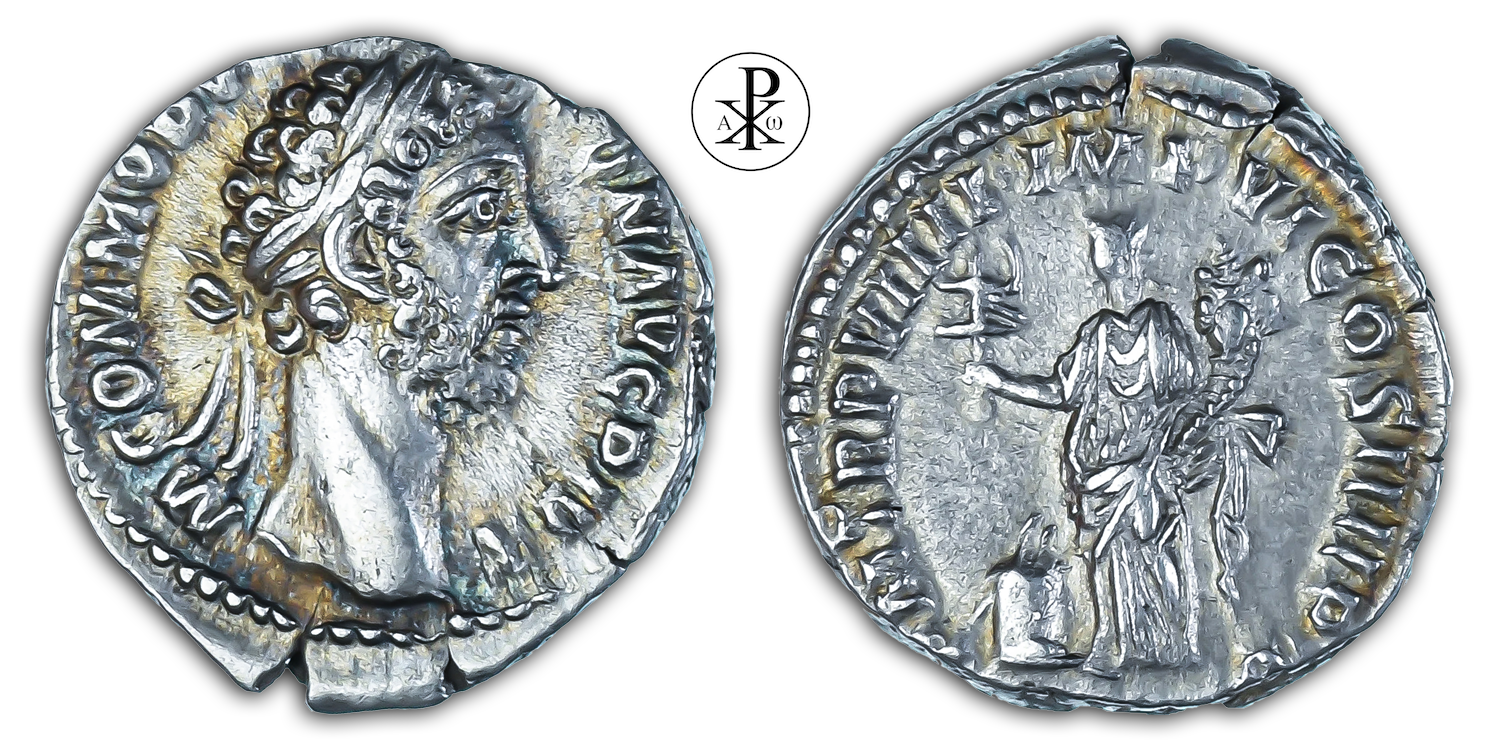Imperator Caesar Marcus Aurelius Commodus Antoninus Augustus
Reign: Commodus
Mint: Rome
Date: 183/184 AD
Nominal: Denarius
Material: Silver
Diameter: 17.8mm
Weight: 2.88g
Reference: RIC III Commodus 74
OCRE Online: http://numismatics.org/ocre/id/ric.3.com.74
Rare: R1
Provenance: Comptoir des Monnaies Anciennes Lille, France
Pedigree: –
Obverse: Head of Commodus, laureate, right
Inscription: M COMMODVS ANTON AVG PIVS
Translation: Marcus Commodus Antoninus Augustus Pius
Reverse: Felicitas, draped, standing left, holding short caduceus in right hand and cornucopia in left hand; at feet, modius
Inscription: P M TR P VIIII IMP VI COS IIII P P
Translation: Pontifex Maximus, Tribunicia Potestate Nona, Imperator Sextum, Consul Quartum, Pater Patriae
Translation: High priest, holder of tribunician power for the ninth time, Imperator for the sixth time, consul for the fourth time, father of the nation
Comment: In Roman mythology, Felicitas is the personification of happiness, bliss and fertility. She is depicted as a matron with a cornucopia, as well as with a caduceus; on her head she sometimes carries a fruit measure. In Felicitas‘ honour, a temple was built for her during the reign of Lucullus. This temple was completed under the reign of Lepidus and burned down under Claudius. Since the dictator Sulla, who bore the epithet Felix, the cult gained ever greater importance. Caesar had a temple built to her and in the decisive battle at Thapsus „Felicitas“ was the watchword of Caesar’s troops. In imperial times, Felicitas Augusta was the symbol of the continuing good fortune of the empire and often appeared with her attributes as „imperial good fortune“ on the reverse of coins. Commodus was so convinced of his own felicitas that he had „Felix“ added to his official imperial titulature for the first time in 185 AD.
Commodus promised the people an unprecedented age of happiness, prosperity and abundance – as also propagated on the coin presented here. The caduceus shown here on the denarius as an attribute stands as a symbol for economy and trade. The cornucopia, in turn, is a mythological symbol of luck. It is filled with flowers and fruits and stands for fertility, generosity, wealth and abundance. The modius standing at the bottom was a wooden vessel with staves and fittings among the Romans; in connection with annona, ears of corn often protrude from the top of the vessel. The modius was a motif frequently used for annona coinage (annona civica). The Roman emperors minted these coins to indicate their services to the grain supply of the city of Rome by securing deliveries from the provinces. In this way, the emperors, who since Augustus were ultimately responsible for the annona civica, allowed themselves to be celebrated as benefactors and providers of the city of Rome.
By the way; Commodus was the first of all emperors to adopt the surname Felix in 185 AD. At first Felix was simply placed behind Britannicus, i.e. separated from Pius (Pius Britannicus Felix; Cohen 49f. 112. 139f. 480f. 666f. etc.). But already from the year 185 AD onwards Pius Felix is also found as Augustus Britannicus (Cohen 147. 328. 663 etc.) – and later Felix is regularly connected with Pius. Indeed, on coins in the years 186-191 AD Pius Felix regularly comes before Augustus and only in the last years 191-192 AD, after the change of name to Lucius Aelius Aurelius Commodus Augustus, Pius Felix comes after Augustus. The same arrangement is generally found on the inscriptions, but not as regularly (cf. the indices of the CIL).
